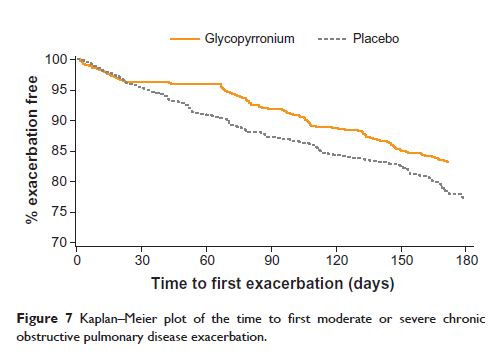9 0 6 7 6
论文已发表
注册即可获取德孚的最新动态
IF 收录期刊
- 2.6 Breast Cancer (Dove Med Press)
- 3.9 Clin Epidemiol
- 3.3 Cancer Manag Res
- 3.9 Infect Drug Resist
- 3.6 Clin Interv Aging
- 4.8 Drug Des Dev Ther
- 2.8 Int J Chronic Obstr
- 8.0 Int J Nanomed
- 2.3 Int J Women's Health
- 3.2 Neuropsych Dis Treat
- 4.0 OncoTargets Ther
- 2.2 Patient Prefer Adher
- 2.8 Ther Clin Risk Manag
- 2.7 J Pain Res
- 3.3 Diabet Metab Synd Ob
- 4.3 Psychol Res Behav Ma
- 3.4 Nat Sci Sleep
- 1.9 Pharmgenomics Pers Med
- 3.5 Risk Manag Healthc Policy
- 4.5 J Inflamm Res
- 2.3 Int J Gen Med
- 4.1 J Hepatocell Carcinoma
- 3.2 J Asthma Allergy
- 2.3 Clin Cosmet Investig Dermatol
- 3.3 J Multidiscip Healthc

已发表论文
每日一次的格隆在治疗罹患中度至重度慢性阻塞性肺疾病的主要为中国病患中的疗效及安全性:GLOW7 的研究
Authors Wang C, Sun T, Huang Y, Humphries M, Bai L, Li L, Wang Q, Kho P, Firth R, D’Andrea P
Published Date January 2015 Volume 2015:10(1) Pages 57—68
DOI http://dx.doi.org/10.2147/COPD.S72650
Received 13 August 2014, Accepted 29 September 2014, Published 5 January 2015
Background: Glycopyrronium is a once-daily (od) long-acting muscarinic antagonist
for the maintenance treatment of chronic obstructive pulmonary disease (COPD).
The GLOW7 study evaluated the efficacy and safety of od glycopyrronium 50 µg in
predominantly Chinese patients with moderate-to-severe COPD.
Methods: In this 26-week, multi-center, double-blind, placebo-controlled, parallel-group study, men and women ≥40 years with moderate-to-severe COPD were randomized to glycopyrronium 50 µg od or placebo (2:1). The primary objective was to confirm the significant improvement of trough forced expiratory volume in 1 second (FEV1) following 12 weeks of treatment with glycopyrronium compared with placebo. Secondary objectives included the effect of glycopyrronium on health status (St George's Respiratory Questionnaire), breathlessness (Transition Dyspnea Index), other lung function parameters, rescue medication use, and COPD exacerbations. Safety and tolerability were also evaluated.
Results: Of the 460 patients randomized, 459 were included in the full analysis set (glycopyrronium, n=306; placebo, n=154; mean age 64.7 years; mean post-bronchodilator FEV1: 50.8% predicted); 425 (92.4%) completed the study. At Week 12, glycopyrronium significantly improved trough FEV1 with a least square means treatment difference of 141 mL (95% confidence interval 111 mL, 171 mL; P <0.001) compared with placebo. The mean treatment effect of glycopyrronium was greater than the minimum clinically important difference versus placebo in both St George's Respiratory Questionnaire total score (-4.92; P <0.001) and Transition Dyspnea Index focal score (1.0; P <0.001) at week 26. Glycopyrronium reduced the risk of exacerbations in terms of time to first moderate or severe exacerbation by 28% (P =0.153) and rate of moderate or severe COPD exacerbation by 29% (P =0.119) compared with placebo. Incidence of death was 1.3% with glycopyrronium and 0% in placebo during the treatment period. Overall incidence of adverse events (glycopyrronium 43.6%; placebo 47.4%) and serious adverse events (glycopyrronium 5.6%; placebo 9.1%) were similar.
Conclusion: In predominantly Chinese patients with moderate-to-severe COPD, od glycopyrronium 50 µg significantly improved lung function, dyspnea, and health status compared with placebo. The safety and tolerability profile of glycopyrronium was comparable to placebo.
Keywords: bronchodilation, COPD, dyspnea, exacerbations, glycopyrronium, health status

Methods: In this 26-week, multi-center, double-blind, placebo-controlled, parallel-group study, men and women ≥40 years with moderate-to-severe COPD were randomized to glycopyrronium 50 µg od or placebo (2:1). The primary objective was to confirm the significant improvement of trough forced expiratory volume in 1 second (FEV1) following 12 weeks of treatment with glycopyrronium compared with placebo. Secondary objectives included the effect of glycopyrronium on health status (St George's Respiratory Questionnaire), breathlessness (Transition Dyspnea Index), other lung function parameters, rescue medication use, and COPD exacerbations. Safety and tolerability were also evaluated.
Results: Of the 460 patients randomized, 459 were included in the full analysis set (glycopyrronium, n=306; placebo, n=154; mean age 64.7 years; mean post-bronchodilator FEV1: 50.8% predicted); 425 (92.4%) completed the study. At Week 12, glycopyrronium significantly improved trough FEV1 with a least square means treatment difference of 141 mL (95% confidence interval 111 mL, 171 mL; P <0.001) compared with placebo. The mean treatment effect of glycopyrronium was greater than the minimum clinically important difference versus placebo in both St George's Respiratory Questionnaire total score (-4.92; P <0.001) and Transition Dyspnea Index focal score (1.0; P <0.001) at week 26. Glycopyrronium reduced the risk of exacerbations in terms of time to first moderate or severe exacerbation by 28% (P =0.153) and rate of moderate or severe COPD exacerbation by 29% (P =0.119) compared with placebo. Incidence of death was 1.3% with glycopyrronium and 0% in placebo during the treatment period. Overall incidence of adverse events (glycopyrronium 43.6%; placebo 47.4%) and serious adverse events (glycopyrronium 5.6%; placebo 9.1%) were similar.
Conclusion: In predominantly Chinese patients with moderate-to-severe COPD, od glycopyrronium 50 µg significantly improved lung function, dyspnea, and health status compared with placebo. The safety and tolerability profile of glycopyrronium was comparable to placebo.
Keywords: bronchodilation, COPD, dyspnea, exacerbations, glycopyrronium, health status
